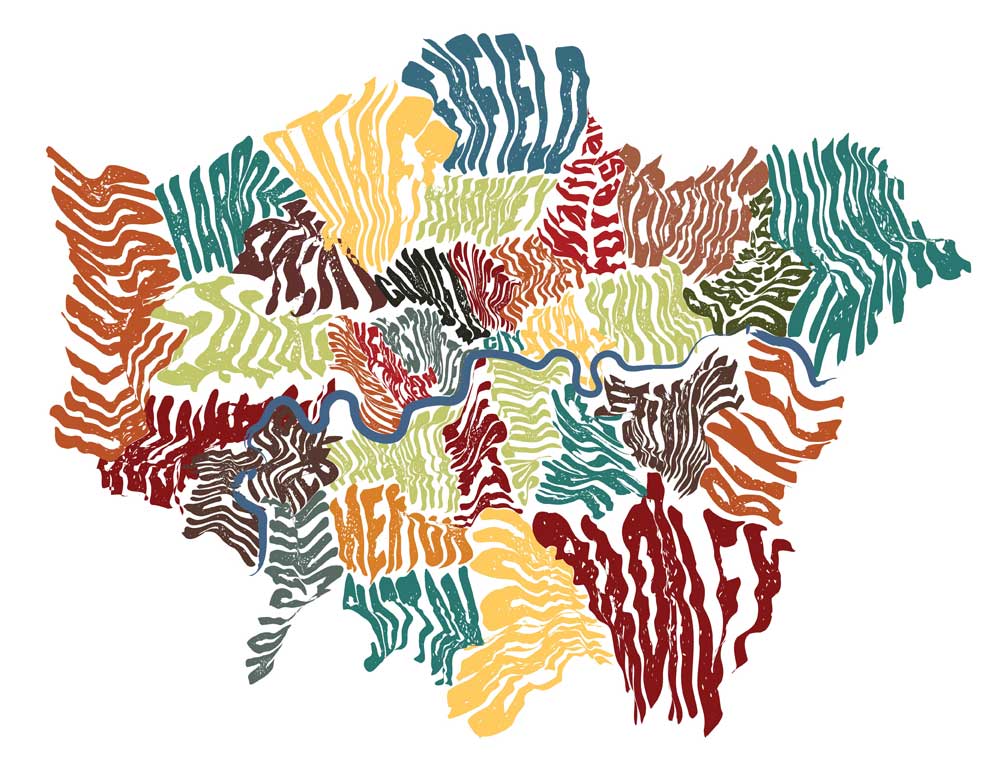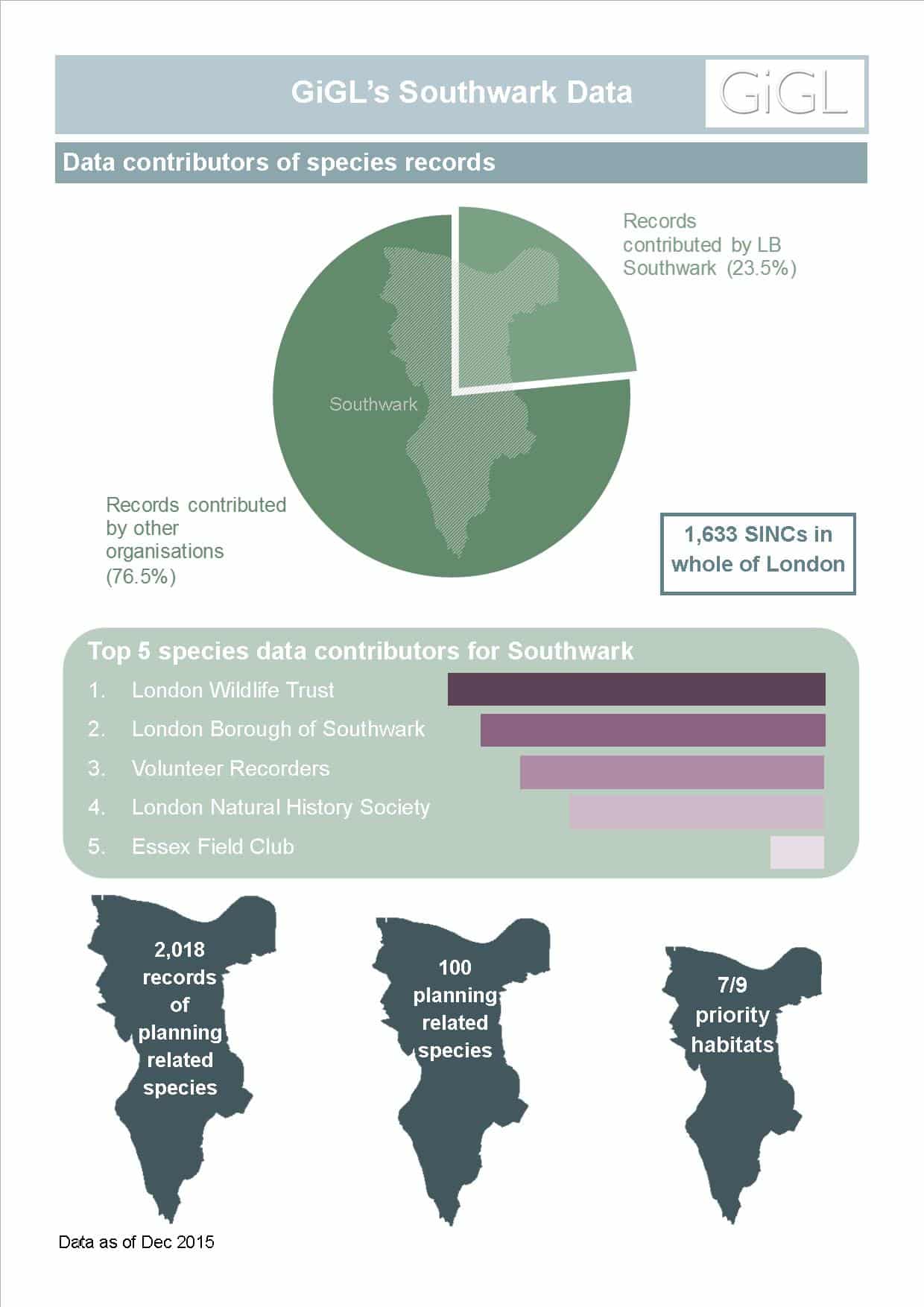
Julie Cox, GiGL Data Officer

LB of Southwark
It’s often said that a picture is worth a thousand words. This is as true when interpreting environmental data as at any other time. Biodiversity data can sometimes be daunting and inaccessible in its raw format, but thoughtful presentation can make it a highly useful resource for a wide variety of audiences. Over the last few months we’ve been exploring new ways of visualising the GiGL partnership’s data. Maria provides an overview of how we’re going about this, and we showcase a magnificent video map of stag beetle record distributions, created by a member of the public using GiGL data, which demonstrates one way of illustrating our partnership’s datasets.
We’ve also been busy doing some big-picture strategic thinking, including starting work on a few important GiGL documents. 2016 will be a special year as we celebrate twenty years since the launch of London’s Biological Recording Project and ten years since we became a fully-fledged Local Environmental Records Centre. We plan to mark the occasion by launching our first strategic action plan.
We’re committed to ensuring our partnership’s data is being used to inform decisions made in the London planning process. Building upon previous projects, we’re conducting some analyses as part of a new planning project. Louise tells us more. As part of our work with the Association of Local Environmental Records Centres (ALERC), we’re also supporting projects that examine the flow of records from commercial organisations, such as ecological consultancies, to users via records centres, as explained by ALERC’s Tom Hunt and Rosie Whicheloe from The Ecology Consultancy. Ella Vogel from the National Biodiversity Network Trust also tells us about one possible solution, the NBN’s consultants’ data portal. Accurate data on the locations of species can be crucial to their protection, a point demonstrated by DC Sarah Bailey of the Metropolitan Police’s Wildlife Crime Unit.
Our inaugural meeting of the GiGL Advisory Panel in September was well attended and, as Chloë outlines, members were able to agree some useful steps forward both for the group and for GiGL as a whole. One of their first topics for discussion was an update to GiGL’s access to data policy, following changes to the way data is shared via the NBN-gateway.
Providing data search reports to consultants and other customers has always formed a core part of GiGL’s workload. Our report service has evolved over the years, responding to demand and technological innovations. The service has undergone another positive change in the last few months. We’re now working with eCountability to deliver our data search reports which has resulted in a quicker turn-around time and access to more data for customers. It has also freed up a lot of GiGL staff time for tailored partner and customer requests, product development and educational outreach work. I hope some of our readers were able to attend Maria’s talk about the role of local records centres as part of the University of London, Birkbeck’s Ecology and Conservation Studies Society, free lecture series.
We continue our series of GiGL Director interviews with Mathew Frith. Mathew has worked closely with GiGL since our embryonic days in the 1990s until today. We take this opportunity to question him about the importance of local wildlife sites, and ask him about the vital role we records centres play in the maintenance of these special areas. London’s Invasive Species Partnership received bad news in the autumn when they learned that their attempts at procuring funding had been to no avail. LISI’s Chair, Valerie Selby, provides a thank you to LISI’s manager Karen Harper and outlines the initiative’s plans for the future. The work of LISI is imperative to the control and eradication of invasive species in London and we hope a way forward can be forged so that its important work can continue.
